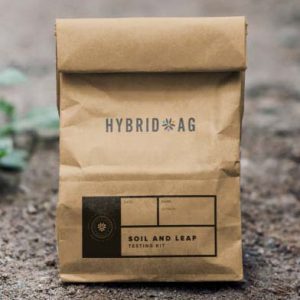
Differential Leaf Sap Testing
Differential Leaf Sap Testing
The blood test for plants!
Differential plant sap analysis provides insight in the actual uptake of nutrients by the plant. This reveals important information about the plant’s health status. An optimal and balanced uptake of nutrients has a positive effect on the plant’s natural disease resistance and, for example, on the quality, firmness and shelf life of fruits.
Hybrid-Ag has adopted Spectrum Analytical’s Differential Leaf Sap Testing since it became obvious that the level of information and analysis needed to adjust fertilisation throughout a crop cycle for the ultimate result was not achievable with dry matter or leaf ash testing. Traditionally with leaf testing we test the youngest fully mature leaf with the concept that it gives the best snapshot of nutrient uptake and availability in a plant at any one time. However, plant scientists have proven that the plant will always give the greatest nutrient availability to young leaves, so we often get a significantly different test result than what we observe in the field. Taking the old and young leaf as separate tests and comparing the results allows us to analyse specific nutrient interactions within the plant and adjust
fertilisation programs to achieve the ultimate outcome for growers.
Dry Matter vs Leaf Sap Testing
When using a dry matter analysis, a deficiency in nutrient uptake will be revealed only 4 or 6 weeks after the actual nutrient deficiency was caused. This is due to the time it takes for a plant to process these nutrients into the cell walls of the plant, which is what we measure with a dry matter test. This is also why fertilization adjustments often come after there is any opportunity to positively impact the end result for a grower. By analysing plant sap, and the result of the young leaf as compared to the old leaf allows a nutrient deficiency to be revealed within a few days of it occurring in the plant, and gives us an accurate ‘blood test of the plant’. This is why plant sap analysis is a powerful tool to manage and adjust fertilization strategies quickly and precisely for the ultimate outcome of the crop and greatest return on investment for the grower.
Benefits of Differential Sap Testing
- Provides a consolidated summary of the total amount of nutrients taken up by a plant
- Reveals varietal differences in nutrient uptake
- Is a tool to adjust fertilization strategies accurately and quickly in season
- Makes it possible to optimise nutritional status to improve natural disease and insect resistance
- Reveals a nutrient deficiency at an early stage
- Gives the opportunity to fine-tune fertilization for optimal production and quality
Differential Testing vs Traditional Sap Testing
One of the biggest advantages of the differential testing is that it allows you to compare nutrient levels in both the young and old leaves of a plant rather than just testing the result in the youngest fully mature leaf.
